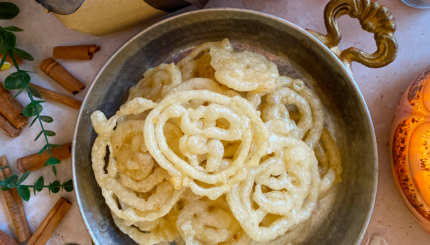Keshet Board Chair, Seth M. Marnin, had the opportunity to talk with one of this year’s OUTstanding! NYC honorees, Joy Ladin, about her journey as a poet, scholar, and a visionary activist for trans equality.
Seth: What particular facets of Keshet’s work particularly resonate for you?
Joy: I think that the teen Shabbatonim are so important.
Many of the folks that I talk with have a fantasy that while older people struggle with issues of inclusion and identity, but younger people have it all worked out. I always want to tell them that that’s not true. Number one, kids struggle a lot and are trying to figure things out, but number two, these are things that communities have to do together.
I think that that kind of fantasy is another aspect of the way communities get stuck in tolerance. We collectively assume that someone else has figured inclusion out, and we know that if we have queer teens who aren’t being driven out, then everything must be okay.
I feel like it’s a success when somebody says: “Wow, what do we really have to do to create inclusive communities?”
Keshet works on creating spaces for LGBTQ teens and reaching out to all kinds of Jewish communities. That work is crucial both for teens and for those Jewish communities.
And if those kids feel as vulnerable as I do in my home communities, they need as much support as we can give them. I can’t really do inclusion work in my own communities. I feel like I’m always hoping others will see me as part of the community, as one of us, and that makes me reluctant to talk about my particular needs as a queer person, If I do, I fear I will bothering myself.
I imagine that many teens would feel the same way, and that those feelings would be magnified by the vulnerability of youth and concerns about family. That’s why I think that the space created by teen Shabbatonim is so crucial. It gives them space and time whether they know they are seen as “us.”
Seth: You talk very eloquently about your Jewish identity and your Jewish journey, but how is your Judaism related or connected to the work that you’re doing for equality?
Joy: There’s a lot in Judaism equality and ethics and social, but my personal relationship to Judaism has been more existential. It sustained me in isolation when I was growing up and throughout my life. Judaism showed me that my personal relationship with God, my sense of God as a living presence, could connect me to others, to a culture, a history, to humanity.
With my work and in my book, I build on this personal experience to show how religion, which so often institutionalizes inequality and oppression when it comes to queer people and other people, can foster inclusion and connection:
“Okay. Maybe we can’t understand and incorporate everybody, but we all have these ways in which we feel different and marginalized and vulnerable, and the Torah challenges us, all of us, to say, despite how different I may feel, I’m created in the image of God.”
In the Torah, I think there’s this idea that we’re created in the image of this absolutely queer being. And so that shared queerness is in everyone —I don’t want to claim it for one group or another. When we see ourselves as all reflecting the queerness, the absolute difference, of the God who created us, God and Torah can help us break down the queer and non-queer binary, to see that all identities are ways of trying to connect ourselves to others not just despite, but because, of the ways each of us feels different.
What I want to do is invite people to recognize their own sense of difference, so that we can realize that we all have a stake in our communities working to include people who feel marginalized and different. That is the way I understand God’s repeated command in the Torah that we shouldn’t wrong people we see as strangers, because each of us knows the soul of the stranger.
Seth: Super interesting. I’m hoping that you’d be willing to talk a little bit about the experience of being the first out trans person at an Orthodox institution.
Joy: It’s been extraordinary to be seen as somebody who embodies secular, modern culture, and still have a role in a traditional culture — to be neither expelled nor integrated. That experience has challenged me intellectually and spiritually, and deepened my understanding of both Judaism and secular culture.
Even before I came out as transgender, working at Yeshiva University forced me to realize that I had to start letting go of my stereotypes of Orthodox Judaism and conservative cultures. And once I came out, I was blown away when students – not all students, but some – would tell me that though their culture didn’t give them any way to understand transgender people, it nonetheless taught them to recognize my humanity and to treat me with respect.
[Coming out] has shown me that Judaism and traditional cultures can encourage us to recognize the humanity of others, even when we can’t understand the ways they are different.
Some of my students now do accept the reality of trans people, and don’t see my identity as an obstacle to working together. But some of my students have no idea what I am, and would be horrified if they had to say anything about it, because they wouldn’t want to be disrespectful. So they have to treat me as human, to treat me in ways that recognize my humanity, even though they can’t understand my gender.
That’s challenged me as a person — I try to be at least as good at relating to people I see as different from me as my more sheltered Orthodox students are. When I can’t understand others’ differences, I ask myself how those students respond to me, and that reminds me that I don’t need to understand others to recognize their humanity.
These experiences with my students also fed into my book: the idea that difference can become a way of broadening our sense of what humans are and not just a way of dividing people up into separate camps. From that perspective, being at Yeshiva University has been incredibly rewarding.
It has always enriched my life in other ways. I doubt I would have done much public speaking about transgender issues if I had come out at a different school, a school where being transgender was less problematic.
The context of Yeshiva University has given my tiny little life more significance than it would have otherwise had. It has turned going to work into something that has meaning for many people I will never know; every time I pass through those doors, I prove that an Orthodox Jewish community can tolerate someone who is openly queer.
Emotionally, it can be hard for me. There’s been a lot of loneliness, and some pain, and some institutional violence. But despite the difficulties, it has been worth it.
Seth: My recollection of the courses you teach, you wouldn’t be teaching, like, “The Soul of the Stranger,” or …
Joy: Oh goodness, no. They wouldn’t want me, or anyone else in the English Department, to teach about the Torah.
Seth: You think your students will read your book?
Joy: One student said that she bought it last fall at the YU book sale. I was surprised that they were selling it. A couple of students have said they have read it, but no one has talked with me about it, so I don’t know how it strikes them..
My fantasy, from the time I started teaching there, was that the Torah would give us a common basis for relating to one another, a common spiritual language. But I’ve come to realize that it’s not as much as a common legacy as I thought it was. The way that they learned Torah, as part of religious practice and tradition, is profoundly different from my self-taught encounters. I see Torah as prior to any specific version of Judaism; they see Torah as they have learned it as the unchangeable foundation of Judaism. I see Torah as constantly growing by being read in the light of individuals’ lives.
Seth: As we talk about your writing, poetry, literature, and art, I’m curious to hear what you think the role of literature and art is or should be in the current political climate?
Joy: The current political climate is awful. But in the broad sense, things are always awful — in every era, in every generation, the world is filled with injustice, inequality, oppression, institutionalized cruelty and suffering.
And so the role of art, I think, is always the same. Even in the darkest times, art offers delight, connection to the ways that human beings can feel alive and astonished and can experience beauty even when everything is horrific.
Art is also always a way of bearing witness, of opening our eyes and souls to what we fear will overwhelm us, of reminding us of our complicity in and responsibility for the world outside our personal circles. Art enables us to hear voices that otherwise are not being heard, and to see things from perspectives that other than our own.
And that means that the role of art is also to lead us over the edge of the map — of whatever our culture’s map of the world is, into the unknown, into discovery, into possibility, into the miraculous. In the Torah, we see the intimate connection between art as delight, as witness, and as possibility in the later chapters of Isaiah, whose magnificent poetry moves seamlessly between naming injustice and summoning us to recognize the new world that God is always offering us,
Seth: When you describe art and literature as taking you over the edge, do you have a particular favorite?
Joy: Outside of the Torah, Emily Dickinson always takes me over the edge, as do Cesar Vallejo and Pablo Neruda. These are poets that I’ve gone back to over and over again. Weirdly enough, I would also say Dante.
Seth: Indeed, indeed. I asked you a little bit about whether you had the opportunity to teach your book, but I’m wondering if you could tell me a little about the book, “The Soul of the Stranger: Reading God and Torah from a Transgender Perspective.”
Joy: The book grew out of this sense that my relationship to Judaism and God sustained me as a trans person when I was growing up, even though Jewish tradition at the time had no place for people who weren’t simply male or female. The most important piece of that was the way the Torah portrays God, as someone who cannot be seen, who has no face or body, who can’t fit into human roles or communities, but still loves human beings and refuses to give up on relating to us. Those were all ways I felt as a trans person living in hiding, but God, unlike me, was out and proud about God’s differences. In that way, Judaism gave me my first queer role model.
When I came out at Yeshiva and I started speaking about transgender identity, I was surprised that people kept asking me about my relation to Judaism. It seemed clear that they expected me to say things like: “Well, of course Judaism is horribly transphobic and homophobic and other kinds of phobic.” Instead, I was describing Judaism as something that had been life-sustaining for me as a queer person.
My being trans was the thing that seemed most challenging to religions that grew out of the Torah religions in which the gender binary idea that human beings were created to be only and always male and female is seen as sacred. . LGBTQ identities are generally imagined as secular and in opposition to traditional cultures. But I’d never experienced a conflict between Judaism and being transgender.
I wanted to see if that perspective was just idiosyncratic, or whether I was accessing something that was part of religious tradition.
More personally, because I have felt sustained by God as a trans person — before transition, during transition, after transition – now that I am here, living as myself, visible as who I really am, I owe it to God to see if I can do something to help God become more visible in human communities.
Seth: What’s your vision for a fully inclusive Jewish community?
Joy: There’s a traditional definition of God that goes, “God is someone whose center is everywhere, and whose circumference is nowhere.” To me that is the definition of a fully inclusive human community: everybody is a center, and there is no edge, so you don’t have to put anybody outside it.
Seth: That’s really beautiful. And my last question is: What does receiving the Hachamat Lev award from Keshet mean to you?
Joy: Let me give a round-about answer. When my grandfather got to America, his family went from Ellis Island to Texas, of all places. His stepmother was abusive, so at eleven years old, he ran away from home. To get away, he jumped on a freight car, which led him to join traveling Vaudeville shows. A lot of Jews were travelling in Vaudeville in the West and that’s how he learned English.
When I came out as transgender, it was like hopping a freight train to get away from a life that was hurting me. I didn’t know where I was going, I didn’t know how to speak the language of the LGBTQ community. But hopping that train led me to Keshet, which, like those vaudeville shows, is going all around the country, picking up marginalized LGBTQ Jews and enabling us to speak up, speak out, and share the life and laughter and pain and wisdom within us.
So winning this award feels kind of sort of backward: this award is showing the great work Keshet has done for me, in helping me live as who I am.
Seth: Thank you. Is there anything you were hoping that I was going to ask you or that you want to add?
Joy: One thing: as a parent right now, I feel acutely aware that I have failed to create a world that’s safe for my transgender son to grow up in. When I’m scared about what he will face, I hearten myself by thinking about Keshet and the work that Keshet has done and is doing in the Jewish community.


